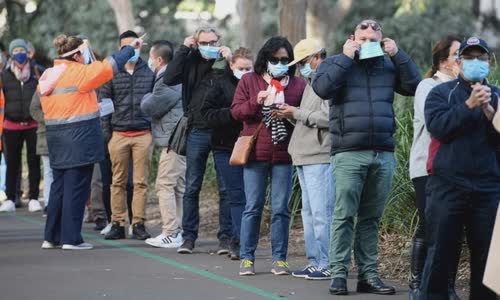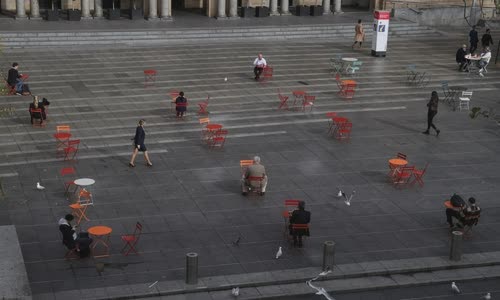Dealing with serious Covid-19 outbreaks, each Australian state has a different approach in isolation and treatment of cases.
Australia, the country that was considered to be a stronghold against epidemic in Asia, is struggling to respond to a new outbreak, making four major cities including Sydney, Darwin, Perth and Brisbane have to blockade from the end of last month.

Photo: AAP.
Sydney has just announced the extension of limited measures a week next night July 16, instead of lifting on July 9.
If you open the door and these people integrate the community, you can quickly record higher numbers, Professor Catherine Bennett, Chairman of the Epidemiology Department at Deakin University, said.
Nearly 31,000 cases and 910 deaths were reported in Australia since outbreaks.
People queue waiting for vaccination at Olympic Park in Sydney on July 7.
Australia has general guidelines of CAVID-19 CA processing and this guide has updated several times throughout the epidemic.
The state of Queensland does not allow isolation at home, even with mild cases and people living alone.
However, children with Covid-19 are exceptions.
Like Queensland, Western Australia did not allow homage to Covid-19 and they had to be isolated in the hotel as prescribed.
However, New South Wales (NSW) has another handling way.
Some states also set up Medihotels, providing accommodation for people who cannot be isolated at home, people who are at risk or need a lot of support.
In Victoria, exception of heavy cases to be hospitalized, medical officials believe that the most ideal choice is to be infected with home treatment through remote medical treatment services.
The general guidelines of the Australian government say that state health agencies should be based on symptoms of infected people to decide whether they can be treated at home, hospitals or facilities such as Medihotel.

Photo: Reuters.
Infections should only be treated at home if they live in low-risk areas and have to see if they live with vulnerable people.
In this case, both infected people and people living in the same house are advised about the risk of infection and precautions.
In each state, local community health workers will regularly call and text the situation of positive cases, providing medical services, including mental health support.
The states and territories also provide other support for people living alone or those who have difficulty doing unable to work for isolation.
After a person has a positive result, they will receive a call from the local health authorities to be provided with information about the Care Procedure.
There are no approved treatments used for mild cases and in most cases, symptoms will run by themselves.
People complied with the regulations of the way in Circular harbor filmed in Sydney on June 22.
So when people infected with NCOV can finish isolation?
According to the guidance of the Australian health authorities, the infected person must meet some of the following conditions: passed at least 14 days from the nearest positive test and without symptoms that appear during this period, spent
People with immunodeficiency must meet more rigorous conditions to be finished isolation.
Before the end of quarantine, the agency will check if this person has any symptoms in the previous 72 hours or not.
At NSW, medical authorities said a person could return to normal life after its self-isolation, but must continue to comply with regulations on ways of stretching and hygiene.



 Crystal Dawn White
Crystal Dawn White







